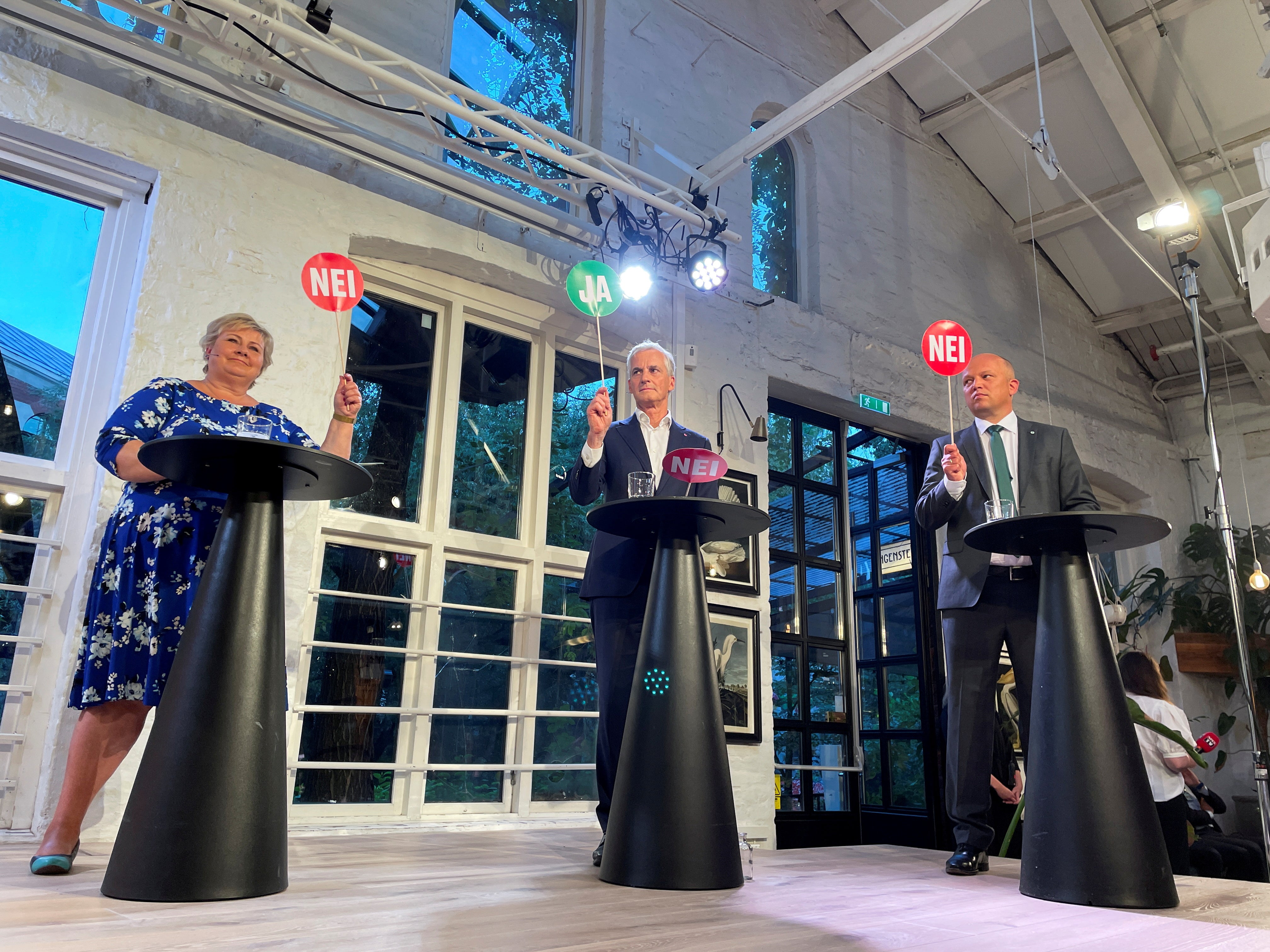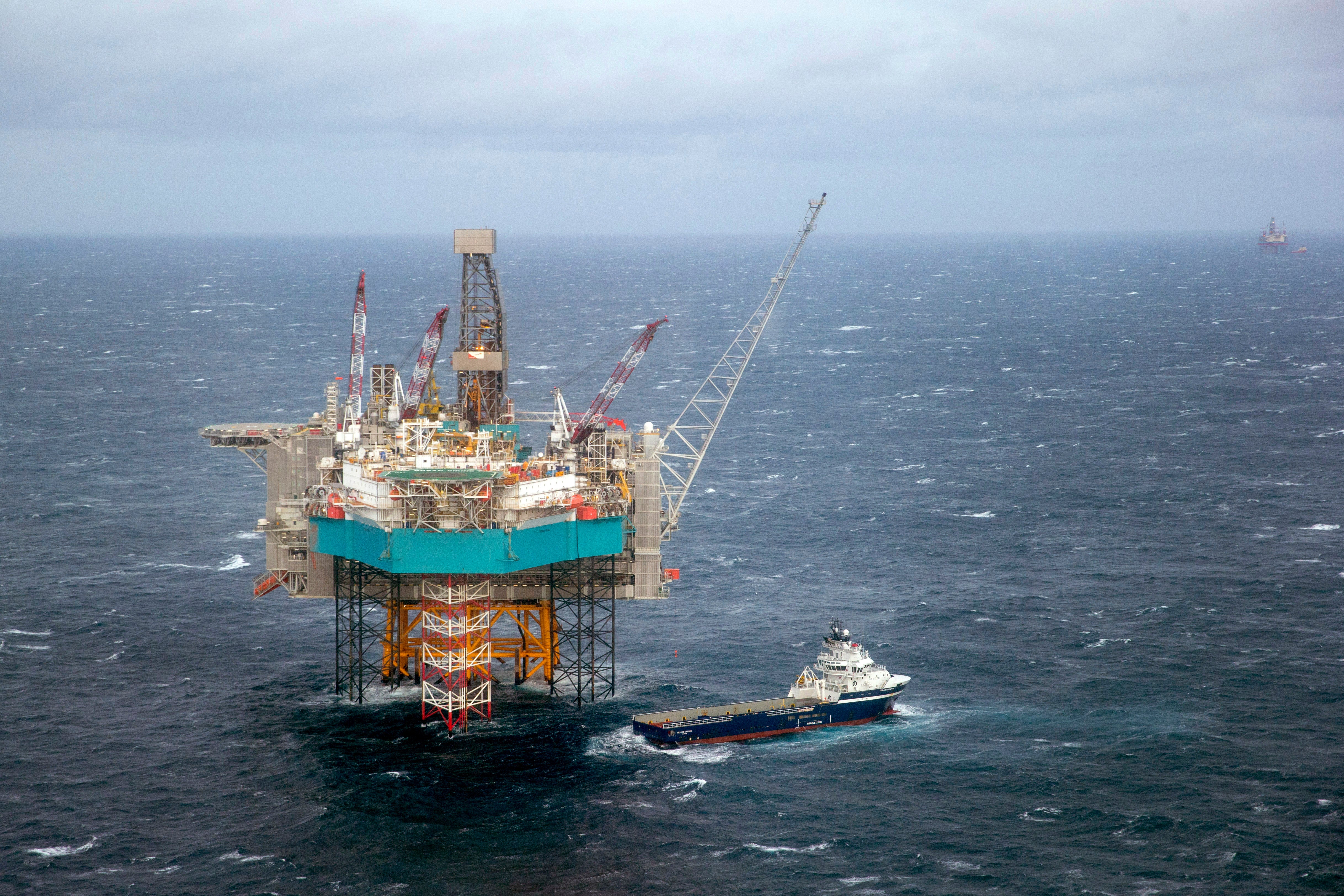The climate crisis election: Norway goes to the polls and environmental concerns will be key to the result
Despite being made wealthy by oil, Norway’s voters now recognise the need to cut emissions, reports Alex Maxia

Norwegians go to the polls on Monday, voting in parliamentary elections to decide who will be their next prime minister. The election debate has focused on several topics, from the decriminalisation of drugs to migration, school reform and taxes, but at the heart of the debate has been the environment.
The climate emergency has been a central topic during the run-up to voting day, as parties are divided on the future of Norway’s biggest export – oil. Most parties agree on the necessity of taking steps in cutting emissions, but the parties are split on how this should be done.
“Over the last elections we have seen that Norwegian voters have been more and more concerned about the climate issues,” says Dr Jonas Stein, associate professor in political science at the Arctic University of Norway.
Historically, the two biggest parties are the Labour Party and Hoyre, the Conservative Party. Both are set to lose seats according to projections, however they are still expected to be the largest parties in a new parliament, so it is likely one of their leaders will be Norway’s next prime minister.
Since the release of the UN’s IPCC (Intergovernmental Panel on Climate Change) report on the climate crisis earlier this year, there has been a record increase in people signing up to the Greens. Even during the election period, there have been changes in government policy from the current centre-right government, which stopped subsidising the search for new potential locations for oil extraction.
The two people who could be Norway’s next PM are Erna Solberg, leader of Hoyre, and Jonas Gahr Store, who heads Arbeiderpartiet (Labour).
Solberg, who has headed her party since 2004, is currently the prime minister and has been in office since 2013 at the head of a centre-right coalition.
Gahr Store is a former foreign minister and health minister, and according to polls is set to be the winner of the coming elections. To be able to form a government he will most likely need to form a coalition with other parties.
One of the two more notable parties that could help form any coalition is the right-wing Fremskrittspartiet, which wants tough restrictions on migration and believes in continuing to extract oil. It is part of the current centre-right coalition government and is predicted to win seats during the vote, proving an essential ally for a potential Conservative-led government.
The other is the Senterpartiet. The centrists’ focus is on decentralising power from the main cities and helping the smaller towns and countryside to have better services. They have risen in the polls and have committed to back the Labour Party’s candidate in a potential governing coalition.
Norway built its social welfare system and a lot of its infrastructure thanks to revenue from oil. The rising concerns about the environment and the importance of the oil industry for the country have fuelled a very big discussion among the political parties.
On the one hand, there is a consensus among most parties, except for Fremskrittspartiet, to work actively in reducing the environmental impact in accordance with the Paris Agreement; on the other, there is the necessity to safeguard jobs and guarantee a source of wealth for the country.

There has been a long-running discussion on whether or not to build “the northern railway”, for which many people have hoped for almost a century.
Currently, the rail link from Oslo ends in Bodo, northwestern Norway, but the northernmost region is not connected. The missing stretch of the railway would connect people in the northernmost cities of Norway, including Tromso, often referred to as “the capital of the Arctic”.
All parties agreed on the need for the investment, as the railway would help transport both people and goods. Among other things, this would allow the transport of fish, Norway’s second-biggest export product, to the south of the country in a quicker time.
Vocal supporters of the plan include the Greens and the Centre Party, who see it as an opportunity to connect the more remote parts of the country and reduce CO2 emissions by cutting the number of trucks on the roads.
Tromso is the biggest city in Arctic Norway, with almost 80,000 inhabitants, but many people here feel very distant from the decision makers in Oslo, who are two hours’ flight away from the Arctic city.
The dark winters and low temperatures make it a challenging place to live for those who are not from the region, and finding ways to create jobs and encourage people to settle here is one of the challenges that the government in Oslo has been facing. The Arctic region is of strategic importance in terms of natural resources such as oil and metals, but also for access to the northeastern trade passage connecting Europe to Russia and east Asia.
“We have made models based on recent opinion polls and they show that we are 95 per cent certain that Jonas Gahr Store will be the next prime minister of Norway,” says Dr Stein.
Though it looks likely there will be a change in prime minister and governing coalition, this does not mean a complete change in policy is ahead as the Norwegian political system is consensus-based.
“You have nine parties who will most probably enter parliament and all have some sort of say in the policy development. Even though in some areas you will see changes, it won’t be a major revolution,” he adds.
Norway’s new leader is expected to be announced in the early hours of Tuesday morning; however, forming a governing coalition might take several weeks, or even months, depending on the agenda negotiations between the parties.






Join our commenting forum
Join thought-provoking conversations, follow other Independent readers and see their replies
Comments